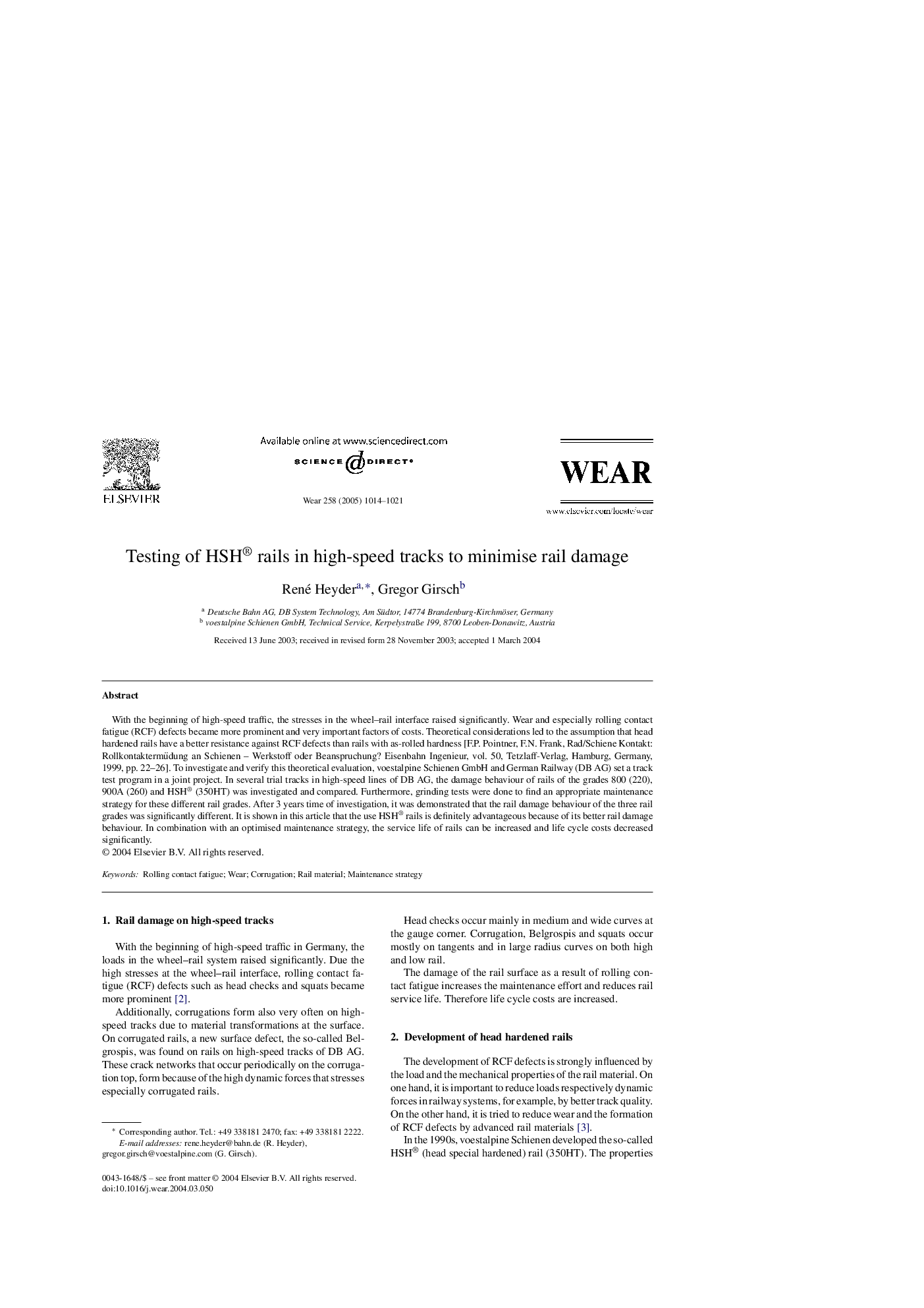| Article ID | Journal | Published Year | Pages | File Type |
|---|---|---|---|---|
| 9679518 | Wear | 2005 | 8 Pages |
Abstract
With the beginning of high-speed traffic, the stresses in the wheel-rail interface raised significantly. Wear and especially rolling contact fatigue (RCF) defects became more prominent and very important factors of costs. Theoretical considerations led to the assumption that head hardened rails have a better resistance against RCF defects than rails with as-rolled hardness [F.P. Pointner, F.N. Frank, Rad/Schiene Kontakt: Rollkontaktermüdung an Schienen - Werkstoff oder Beanspruchung? Eisenbahn Ingenieur, vol. 50, Tetzlaff-Verlag, Hamburg, Germany, 1999, pp. 22-26]. To investigate and verify this theoretical evaluation, voestalpine Schienen GmbH and German Railway (DB AG) set a track test program in a joint project. In several trial tracks in high-speed lines of DB AG, the damage behaviour of rails of the grades 800 (220), 900A (260) and HSH® (350HT) was investigated and compared. Furthermore, grinding tests were done to find an appropriate maintenance strategy for these different rail grades. After 3 years time of investigation, it was demonstrated that the rail damage behaviour of the three rail grades was significantly different. It is shown in this article that the use HSH® rails is definitely advantageous because of its better rail damage behaviour. In combination with an optimised maintenance strategy, the service life of rails can be increased and life cycle costs decreased significantly.
Related Topics
Physical Sciences and Engineering
Chemical Engineering
Colloid and Surface Chemistry
Authors
René Heyder, Gregor Girsch,
